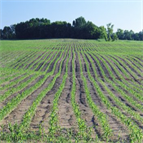Find methods for your needs
Refine by Feature
Displaying 1-4 of 4 results for Tag: Fungicide
AN666: Routine analysis of polar pesticides in water at low ng/L levels by ion chromatography coupled to a triple quadrupole mass spectrometer
Instrument Type: ICMSWe present an IC-MS/MS based method for high-throughput screening and quantitation of polar pesticide residues and their metabolites in water matrices below the current legislative requirements. Direct injection eliminates long and laborious sample preparation and makes the method more sensitive and faster than traditionally used LC-MS/MS methods, which utilize FMOC derivatization. This method can increase cost savings, provide more reliable results, and increase sample throughput.
Analysis of Dithiocarbamate Pesticides by GC-MS
Instrument Type: GCMSThe class of dithiocarbamate fungicides (DTCs) is widely used in agriculture. They are non-systemic and both the formulation and their break-down products typically remain at the site of application. DTCs exhibit a broad spectrum of activity against various plant pathogens, low acute mammal toxicity, and low production costs. DTC are highly unstable so they can be quantitatively converted to carbon disulphide by reaction with tin(II)chloride in aqueous HCl (1 : 1) at 80 °C. The CS2 gas produced is absorbed into iso-octane and measured by GC-MS as described in this application.
Determination of Carbendazim and Benomyl Residues in Oranges and Orange Juice by Automated Online Sample Preparation Using TLX-LC-MS/MS
Instrument Type: LCMSMSMethyl 2-benzimidazole carbamate, most commonly known as carbendazim, is a widely used broad-spectrum benzimidazole fungicide and a decomposition product of benomyl. Carbendazim is used to control plant diseases in cereals and fruit, including citrus, bananas, strawberries, pineapples, and pome fruits. We describe a method that is an adaptation of an existing online, multi-residue pesticide method (Thermo Scientific Method 522133) proven and verified specially for the actual carbendazim contamination issue of orange juices in the US.
Testing LC-MS System Robustness with Automated Sample Cleanup Using Red Wine as a Matrix
Instrument Type: LCMSMSTraditionally, LC-MS/MS has been used by the environmental and food industries for the identification and quantitation of these residues. However, this methodology typically requires extensive offline sample preparation, which can be time consuming and expensive. We test the robustness of an LC-MS system for an automated online preconcentration system using a dirty matrix.




